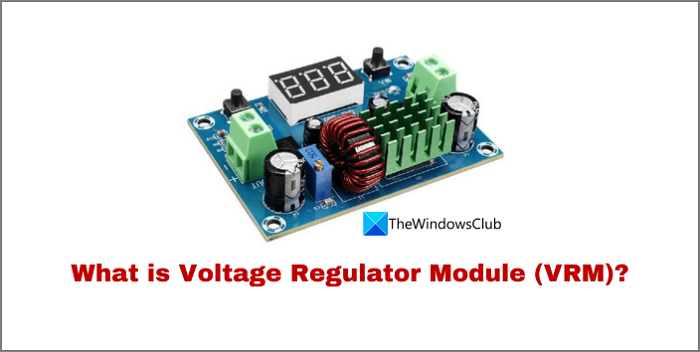In this guide, we explain the Voltage Regulator Module (VRM) in simple terms for everyone to understand. For the optimal performance and longevity of electronics, it is important to maintain stable and regulated voltage. Let’s see how the voltage is regulated and what Voltage Regulator Module does.

What is Voltage Regulator Module (VRM)?
Imagine that you have connected an electric device to a socket where the voltage is too high that the device cannot bear, The high voltage blasts or destroys the device. Microprocessors and chips are no different to it. If they receive high voltage, they will be destroyed beyond repair. The need for a Voltage Regulator Module arises.
A Voltage Regulator Module (VRM) is a specialized point-of-load device that is designed to provide microprocessors and chips with appropriate voltage for them to work. Voltage Regulator Modules convert the high voltage powers such as +3.3V. +5V. or +12V to a lower voltage required by the devices. This allows the supply of different voltages to different devices on the same motherboard. Voltage Regulator Modules are also known as processor power modules (PPM) as they supply power to all devices on a motherboard.
VRMs play a crucial role in maintaining the integrity and reliability of electronic devices. They are associated with the power delivery systems on the motherboard. For modern Central Processing Units (CPUs) and Graphics Processing Units (GPUs), a stable and precise voltage supply is essential for their optimal performance. The Voltage Regulator Module on the motherboard converts the voltage incoming from the power supply unit to specific levels of voltage as needed by the CPU and GPU.
How does a Voltage Regulator Module work in a computer?
As discussed above, the Voltage Regulator Module is a crucial component in a computer. It works in the following ways on a computer:
- Receives voltage from the power supply, converts it, and sends precise voltage to various components
- VRM consists of various components that include voltage regulators, inductors, capacitors, and integrated circuits. The voltage regulator adjusts the voltage and ensures the voltage is within specified limits even when there are power fluctuations from the power supply unit.
- VRM works in multiple phases in parallel to distribute the load and improve the overall efficiency. Inductors play a crucial role in storing and releasing energy that aids a constant supply of voltage.
- Modern VRMs come with a Pulse Width Modulation (PWM) controller that regulates voltage by adjusting the duty cycle of the electrical pulses sent to the CPU or GPU. The duty cycle means the amount of time a voltage is on compared to the total time.
- Modern VRMs have temperature sensors and shut down the supply if the temperature exceeds a limit as a preventive measure.
Symptoms of bad Voltage Regulator Module in a PC
If there are any issues with the Voltage Regulator Module on your PC, you can experience the following symptoms.
- Random system crashes due to unstable voltage to CPU and other components
- Overheating of the PC as the voltage fluctuations hinder the performance of some components and some overheat due to excessive or not receiving required voltage.
- A bad Voltage Regulator Module takes a toll on the performance of the PC. CPU or GPU might not work to their capabilities due to unstable voltages.
- Boot failures, strange noises from the PC, and even burning smell or smoke.
If you experience any of the above symptoms on your PC, it is better to consult a service center or a professional who repairs computers.
Read: Red CPU light on Motherboard with no display
How does a Voltage Regulator Module affect CPU Performance?
CPU, to perform at its optimal stage, requires a precise influx of voltage. If VRM is not working properly by not sending the required voltage, it degrades the performance of the CPU and limits its capabilities. It may hinder overclocking and lead to unexpected shutdowns, and the lifespan may decrease. A good VRM ensures the best performance of both CPU and GPU and increases efficiency and lifespan.
Is Voltage Regulator good for PC?
Voltage Regular Module is an essential component in a PC. Various components on the motherboard require various voltages of power. The power supply unit cannot take care of that. The Voltage Regulator Module acts as an intermediary and manages the voltages and sends precise voltages to components of a PC.
Related read: Causes & Signs of Motherboard Failure.